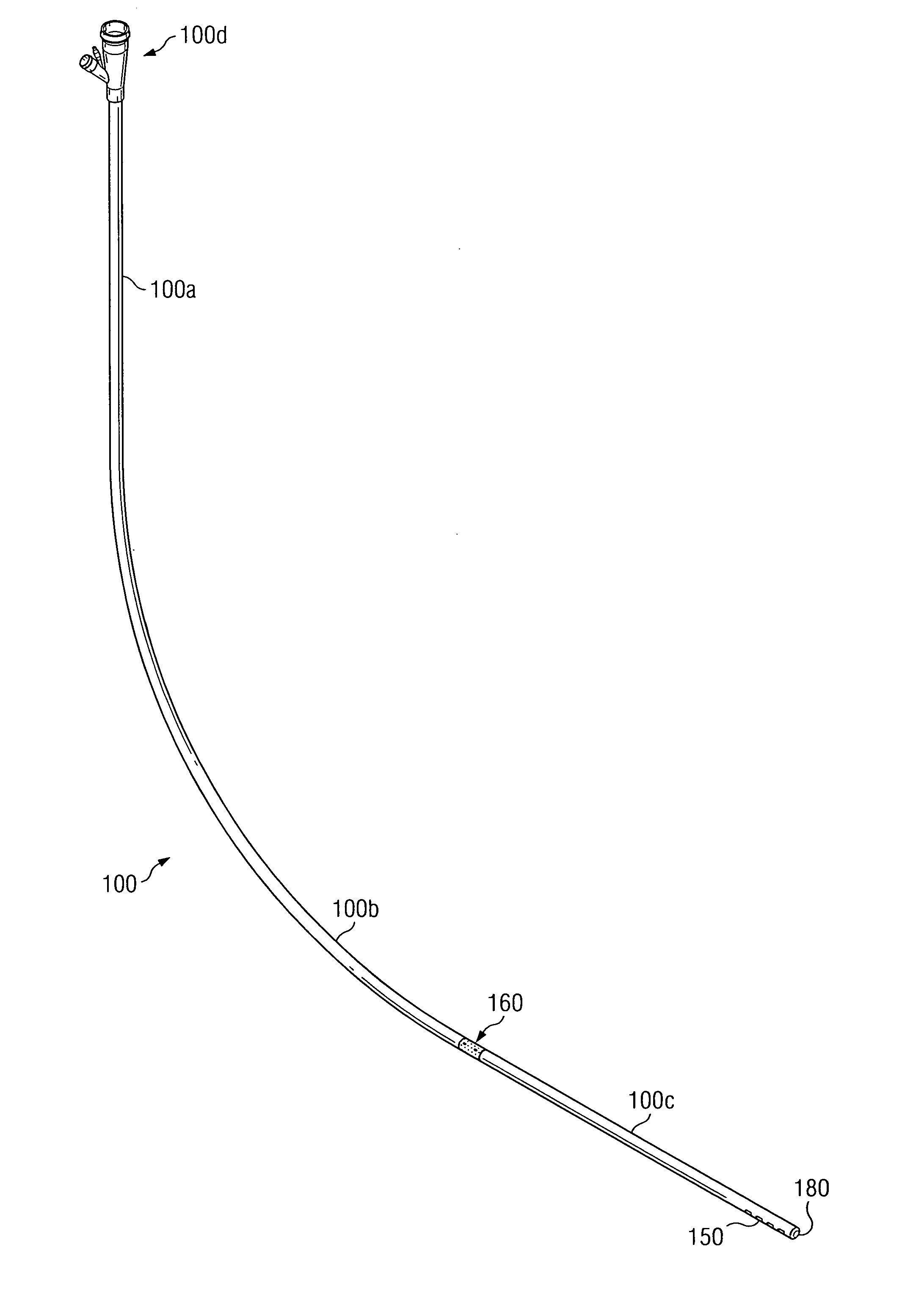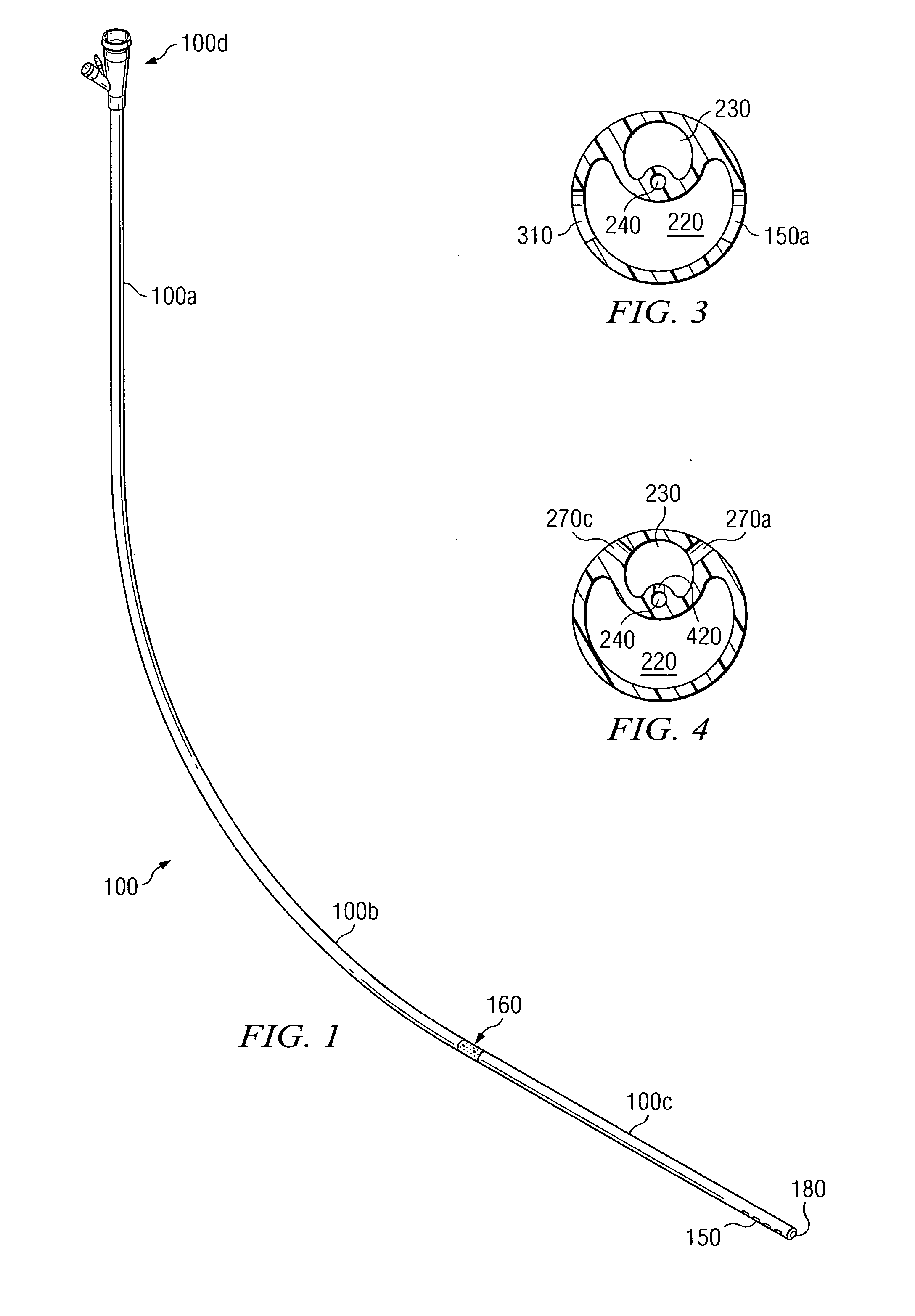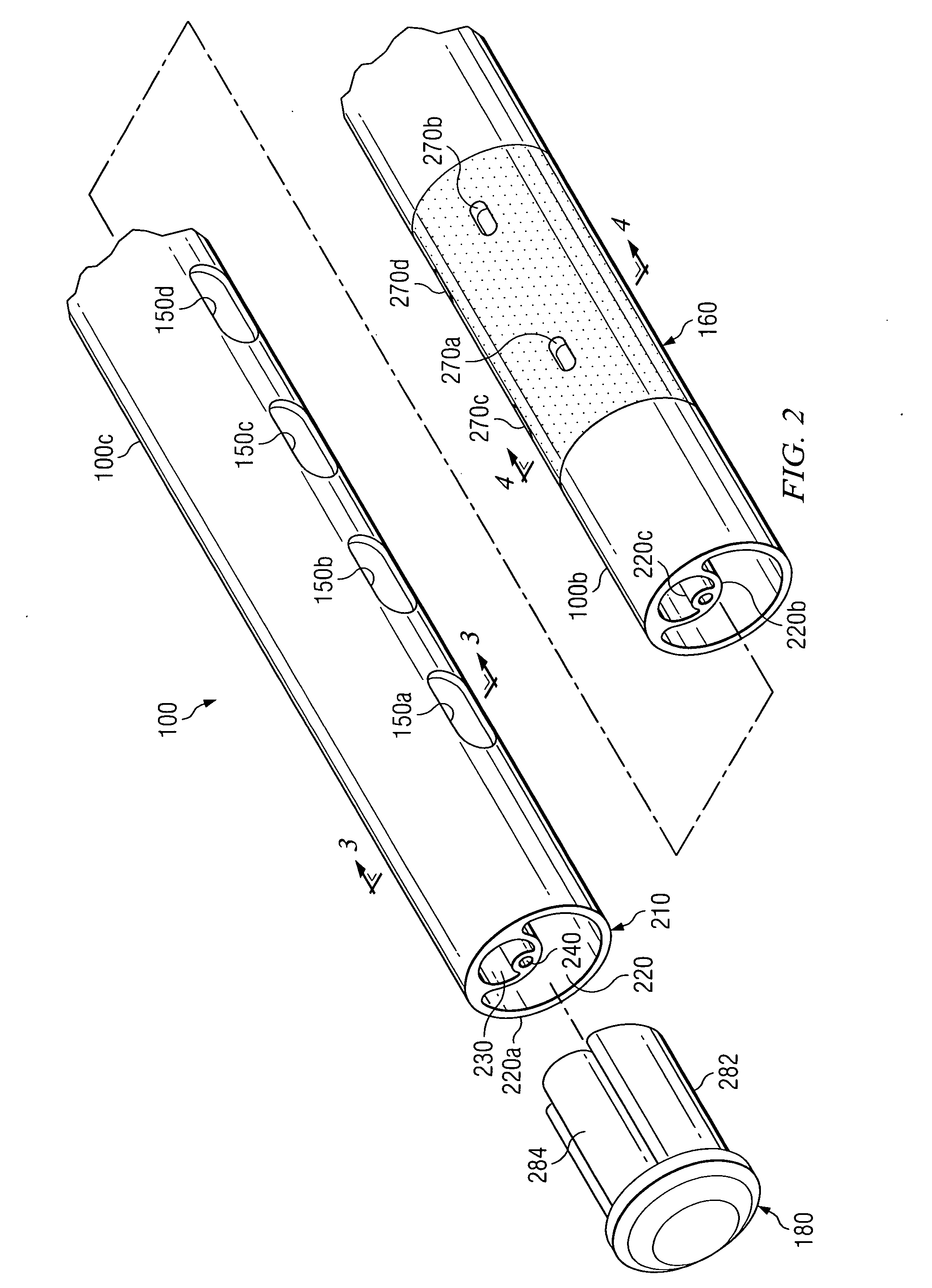Gastric aspirate intestinal feeding tube
a technology of gastrointestinal aspiration and feeding tube, which is applied in the field of multilumen flexible gastrointestinal tube, can solve the problems of inability to safely carry out feeding and aspiration simultaneously, contribute to morbidity and mortality in such patients, and achieve the effect of limiting irritation of the oral-nasal cavity
- Summary
- Abstract
- Description
- Claims
- Application Information
AI Technical Summary
Problems solved by technology
Method used
Image
Examples
Embodiment Construction
[0024] Referring to the drawings, and in particular FIG. 1, the medical intubation device 100 of the preferred embodiment of this invention is illustrated. The intubation device may be described generally as having three sections. A first section 100a is the upper section and includes an adaptor or fitting 100d illustrated in more detail in FIGS. 5 and 6.
[0025] The second section or intermediate section 100b includes a radio-opaque or other marker 160 shown in detail in FIG. 2, and the distal or insertion section 100c includes openings 150 for delivery of sustenance and medicines into the duodenum. The distal section 100c typically terminates at the distal end with a weighted member 180 shown in detail in FIG. 2.
[0026] Turning now to FIG. 2, a perspective view shows portions of sections 100b and 100c of a preferred embodiment of the medical intubation tube 100. Section 100c is proximal to an insertion or distal end 210 of the tube 100, illustrating a preferred configuration of a f...
PUM
 Login to View More
Login to View More Abstract
Description
Claims
Application Information
 Login to View More
Login to View More - R&D
- Intellectual Property
- Life Sciences
- Materials
- Tech Scout
- Unparalleled Data Quality
- Higher Quality Content
- 60% Fewer Hallucinations
Browse by: Latest US Patents, China's latest patents, Technical Efficacy Thesaurus, Application Domain, Technology Topic, Popular Technical Reports.
© 2025 PatSnap. All rights reserved.Legal|Privacy policy|Modern Slavery Act Transparency Statement|Sitemap|About US| Contact US: help@patsnap.com



